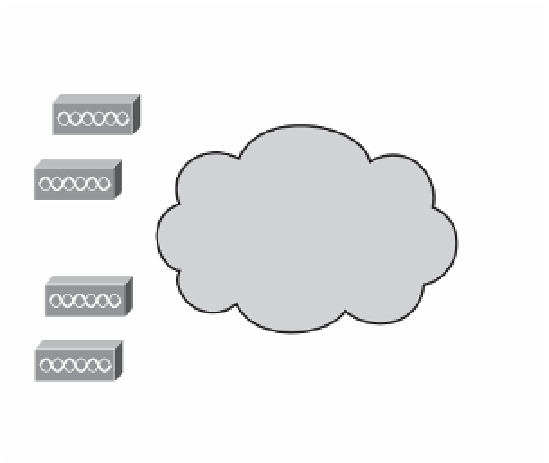Information Technology Reference
In-Depth Information
Primary WLC for
AP1 and AP2.
Secondary WLC
for AP3
and AP4.
AP1
AP2
Tertiary
WLC
AP3
Primary WLC for
AP3 and AP4.
Secondary WLC
for AP1
and AP2.
AP4
Figure 5-15
N+N+1 Controller Redundancy
Ta ble 5 - 9 covers WLC redundancy.
Ta b l e 5 - 9
WLC Redundancy
WLC
Redundancy
Description
N+1
A single WLC acts as the backup for multiple WLCs. The backup WLC is
configured as the secondary on APs.
N+N
An equal number of controllers back up each other.
N+N+1
An equal number of controllers back up each other. The backup WLC is
configured as the tertiary on APs.
Radio Management and Radio Groups
The limit of available channels in the ISM frequencies used by the IEEE 802.11b/g/n stan-
dard presents challenges to the network designer. There are three nonoverlapping channels
(channels 1, 6, and 11). The recommended best practice is to limit the number of data de-
vices connected to each AP to 20, or no more than 7 concurrent voice over WLAN
(VoWLAN) calls using G.711 or 8 concurrent VoWLAN calls using G.729. Additional APs
should be added as user population grows to maintain this ratio of data and voice per AP.
Cisco Radio Resource Management (RRM) is a method to manage AP RF channel and
power configuration. Cisco WLCs use the RRM algorithm to automatically configure, op-
timize, and self-heal. Cisco RRM functions are as follows:
Radio resource monitoring:
are sent to the WLC, which can detect rouge APs, clients, and interfering APs.
■







